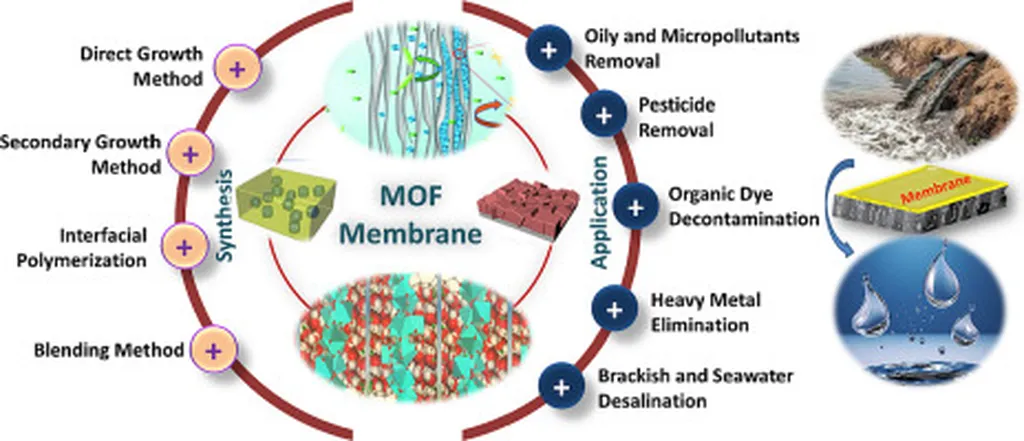In the quest for more efficient and sustainable water treatment solutions, researchers have made a significant stride by developing advanced membranes that could revolutionize industries reliant on clean water and wastewater management. A recent study published in *Materials Research Express* (translated from Arabic as “Expressions of Materials Research”) details the fabrication of thin-film nanocomposite (TFN) membranes incorporating metal-organic frameworks (MOFs), offering a promising leap forward in nanofiltration technology.
At the heart of this innovation is the integration of UiO-66-NH2, an amine-functionalized zirconium-based MOF, into a polyamide active layer. This layer is formed through the interfacial polymerization of trimesoyl chloride (TMC) and trans-1,4-diaminocyclohexane (CHDA), supported by a polyethersulfone (PES) ultrafiltration membrane. The research, led by Bassam A. Sweileh of the Department of Chemistry at the University of Jordan, demonstrates how these TFN membranes can enhance both permeability and selectivity, critical factors for industries such as textiles, chemicals, and pharmaceuticals.
The study reveals that at an optimal concentration of 0.05 wt% UiO-66-NH2, the membranes exhibited a remarkable increase in water flux, soaring from 8.65 to 305.4 liters per square meter per hour (LMH), while maintaining a high dye rejection rate of 97.5% at 10 bar pressure. “The incorporation of UiO-66-NH2 into the polyamide layer not only enhances hydrophilicity but also significantly boosts the membrane’s performance without compromising its structural integrity,” Sweileh explained. This balance is crucial for long-term industrial applications, where durability and efficiency are paramount.
However, the research also highlights the challenges of nanoparticle loading. At higher concentrations (0.1 wt%), agglomeration of the nanoparticles led to a decrease in permeability, though selectivity remained high. This underscores the importance of carefully optimizing the nanoparticle content to achieve the best performance.
The implications of this research are far-reaching, particularly for industries facing stringent effluent regulations and water scarcity. “This scalable fabrication method and compatibility with standard membrane systems make this approach highly practical for industry,” Sweileh noted. The potential applications span advanced dye wastewater treatment, textile effluent management, and other separation processes in the chemical and pharmaceutical sectors.
As water treatment technologies continue to evolve, the integration of MOFs into TFN membranes represents a significant advancement. This innovation could pave the way for more efficient and sustainable water purification solutions, addressing critical needs in regions grappling with water shortages and environmental regulations. The study not only showcases the potential of MOF-based TFN membranes but also sets the stage for future developments in membrane technology, offering a glimpse into a future where clean water is more accessible and sustainable.

